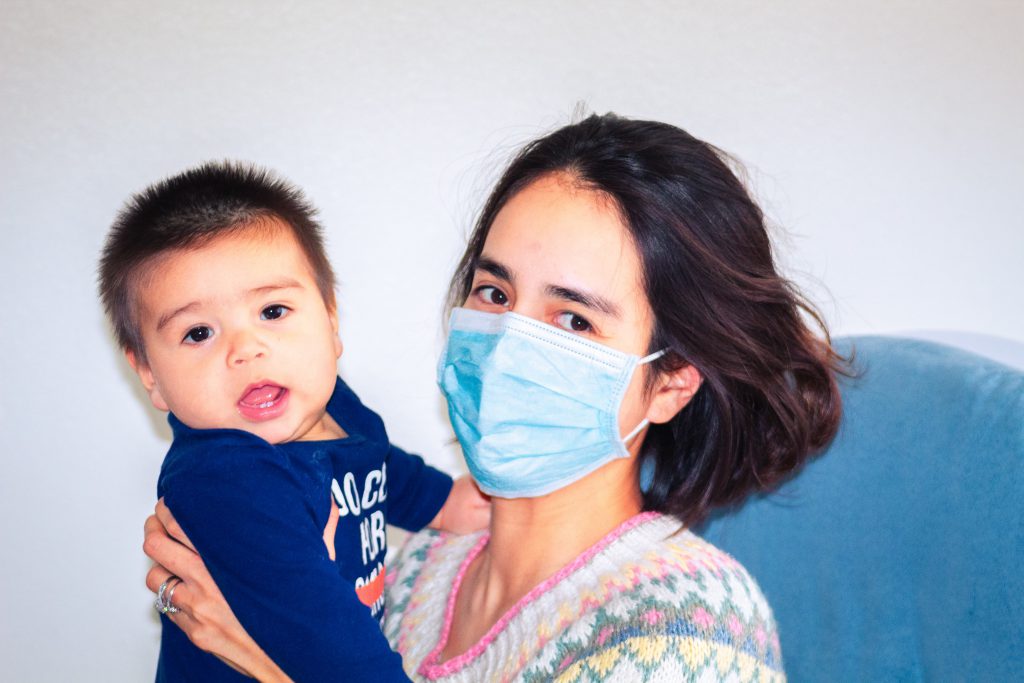By Alyssa Meuwissen, PhD, Research Associate
Parents and caregivers are understandably concerned about how our changed lifestyle amid the COVID-19 pandemic is affecting children. In my previous post on the subject, I explained how I categorized some of parents’ most common questions based on a theory of brain development that breaks learning down into experience-expectant and experience-dependent processes. Experience-dependent processes can occur anytime in life. (In other words, if your two-year-old is missing out on peer interactions right now, don’t worry: she can catch up next year.)
In this installment, I’ll address aspects of the pandemic that I think fall into a kind of middle ground. These aspects alter the environment that the developing brain is set up to learn from. That means they can cross the line into affecting experience-expectant processes and so are areas of potential concern. The good news is that adults can act to mitigate these experiences so that they don’t affect children in the long term.
Will babies be affected by seeing adults wearing masks?
Beginning at birth, babies prefer to look at faces—even drawings of faces or face-like shapes—above all else. It’s clear that they’re biologically programmed to seek out faces and that caregivers’ emotional expressions provide crucial information about the world around them. Adults in public places are now wearing masks, making their faces distinctly less face-like, and hiding our mouths, which are the most obvious indicators of smiles.

My short answer: Babies are incredibly resilient. They can probably learn a lot in whatever time they have with unmasked adults. It’s unlikely that sometimes seeing adults, including primary caregivers, in masks will have a great impact on children’s development—although babies may notice and even show some distress. However, children who spend long hours in settings with masked caregivers may not be getting critical input that the developing brain expects and relies on. I don’t know of any research at this time that can point to how much unmasked time is enough.
This is most concerning for:
- Children who spend long hours in child care settings with masked providers
- Young babies who don’t have the vision and cognition to process the variety of environmental cues that toddlers and preschoolers do
- Children with developmental delays or difficulties with emotion regulation or perspective-taking
What can we do to mitigate concerns?
- Make sure that adults who live in babies’ households (so they don’t need to be masked) know the importance of face-to-face time. Every minute counts in terms of eye contact, facial expressions, and talking to your baby.
- For those who must be masked when interacting with babies, there are clear masks available that allow others to see your mouth when interacting with you. The ClearMask is one version that has been approved by the FDA and is being recommended by the Florida Association for Infant Mental Health.
Will the increase in screen time harm our children?
Like most parents working from home, I have used screens more than I otherwise would to occupy my toddler. A lot of parents I know worry about this, and with good reason, as children’s brains do not expect to sit and passively consume blinking lights as a main source of stimulation. There is evidence that too much screen time can affect children’s ability to pay attention and regulate their own behavior. However, we also know that the content chosen matters greatly, and that children can learn academic and social skills from high-quality TV and games.
My short answer: This depends on dose and content. Screen time has the potential to be harmful for children if it takes away their opportunities to play, be active, and engage in other types of thinking, or if they are watching shows that are violent or not age-appropriate.
What can we do to mitigate concerns?
- Choose programming intentionally that will promote cognitive and social skills. With limited opportunities to play with other children or experience new ideas and places, the content kids view on screens is likely shaping their world view now more than ever, and we can use that to our advantage! PBS has great shows for young children–Daniel Tiger, Mr. Rogers, Sesame Street, and Elinor Wonders Why are a few that are designed to teach children academic and social skills. Khan Academy has a free app with age-specific games. Search the internet for videos about any of your child’s interests, from how a garbage truck works to live streams of baby polar bears.
- Be involved in screen time. I know that often, the whole point of screens is to have a chance to do something else. But if you watch a show with your child every once in a while or even just catch the first or last few minutes, you’ll glean enough to help children apply lessons from the show to their own life.
- Set limits and be consistent. Make the limits reasonable given your current situation so that you can stick to them; it’s OK if this looks different than it would in non-pandemic life. Children will be less likely to have meltdowns if they can expect that screens are used during a specific time of day for a certain length of time.
My next post in this series will explore my greatest concern about children’s development during COVID-19: the pandemic’s impact on adults.




